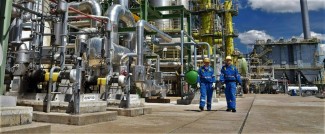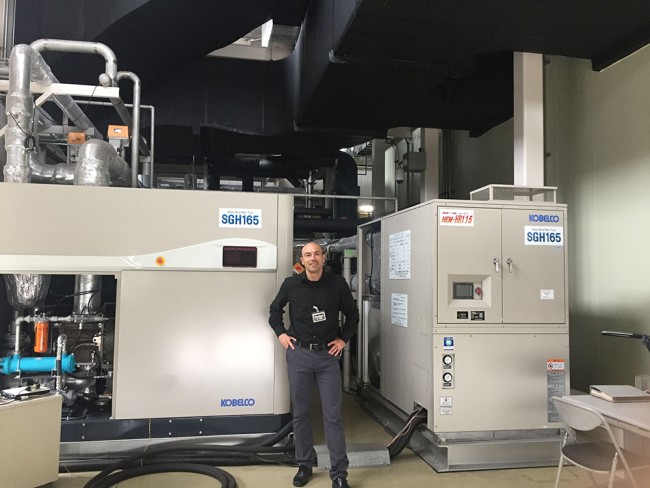As gas prices soar, a familiar but little-used technology—industrial heat pumps (IHP)—offers a compelling path to greater electrification and energy security, according to a report published today by the American Council for an Energy-Efficient Economy. The research shows that, where applied, IHPs could cut U.S. industrial energy use associated with process heat (the heat that powers manufacturing) by up to one-third and eliminate the equivalent of nine million cars’ emissions.
IHPs, essentially residential heat pumps on steroids, have been around for decades. While increasingly used in Europe, Japan, and Australia, they have gained little traction in the United States, which has fallen woefully behind in the race to decarbonize industry.
Bringing large-scale electrification to the industrial sector is important because industry accounts for more than 25% of U.S. energy use and greenhouse gas (GHG) emissions. This includes the thermal energy used to prepare materials and produce manufactured goods (process heat), which accounts for 50% of on-site energy use. Today, less than 5% of process heat comes from electricity; instead, it’s sourced from fossil fuels. Beneficial electrification (the increased use of electricity from low- or no-carbon sources such as wind, solar, and hydropower) is a prime route for industry to reduce energy and GHGs, so it’s crucial to greatly accelerate adoption of electric technologies such as IHPs.
Now is the time to press the accelerator on IHP adoption. Corporate sustainability goals and aggressive science-based targets for GHG reductions have many companies searching for solutions. IHPs are a solution that can be implemented in the near term, delivering a fast start to GHG reductions. IHPs are commercially available, and their capabilities have advanced, making them ready to meet a broad range of needs (several types can provide process heat up to 160oC, twice the previous limit). IHPs can be a great fit for supplying heat in industries such as food and beverage, pulp and paper, and chemicals, where there is a high proportion of process heat in the range of IHP applicability. Multiple IHP types can now provide heat up to 160°C, with 200oC a target for advanced types.
Pictured above: Steam Grow Heat Pump SGH 120/165 from Kobelco at CRIEPI (Central Research Institute of Electric Power Industry) in Japan (Photo credit: Cordin Arpagaus, Switzerland) © Cordin Arpagaus
To accelerate IHP adoption, multiple stakeholders (e.g., industrial players, utilities, IHP vendors, service providers) need to recognize and pursue this opportunity. As the map below shows, the electricity-to-natural gas price ratio is disadvantaged in many regions of the United States, creating an inviting opportunity for policy incentives and rate design. The recent increase in energy prices and energy security concerns may make IHPs even more attractive. Even with IHP paybacks of 2–3 years (the acceptable threshold for industry), the uncertainty of investing in newer technology combined with uncertain integration, local service and maintenance capabilities can be obstacles. Policy enablers and incentives can address these challenges effectively while catalyzing electrification, improving the efficiency of process heat generation, and increasing flexibility and competitiveness.
The level of impact achievable with IHPs is worth the investment. ACEEE’s research shows that across the applications studied in the three industries noted above, IHPs could:
- Save the equivalent energy use/year of 2.7–3.1 million homes (26–32% of the source energy [net, after subtracting electricity use] depending on the scenario).
- Avoid emissions equivalent to those of 6.5–9.4 million cars/year (30–43 million metric tons CO2e /year in 2022).
- Use 5 gigawatt/year of additional electricity to run the IHPs, facilitating electrification. A gigawatt is the amount of electricity needed to run a medium sized city.
The energy and GHG savings could be even greater across additional applications and industries. And the GHG savings could double as the electric grid becomes greener.
To realize that potential, the United States needs to move quickly to overcome hurdles in multiple categories: economics, technical risk, integration, and development of local service capabilities. The keys to accelerated impact for IHPs include support for pilots, enabling policies, and development of infrastructure that will increase access to and reliable use of beneficial electrification for industry.



